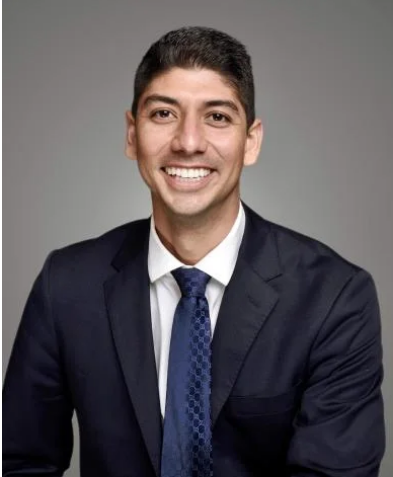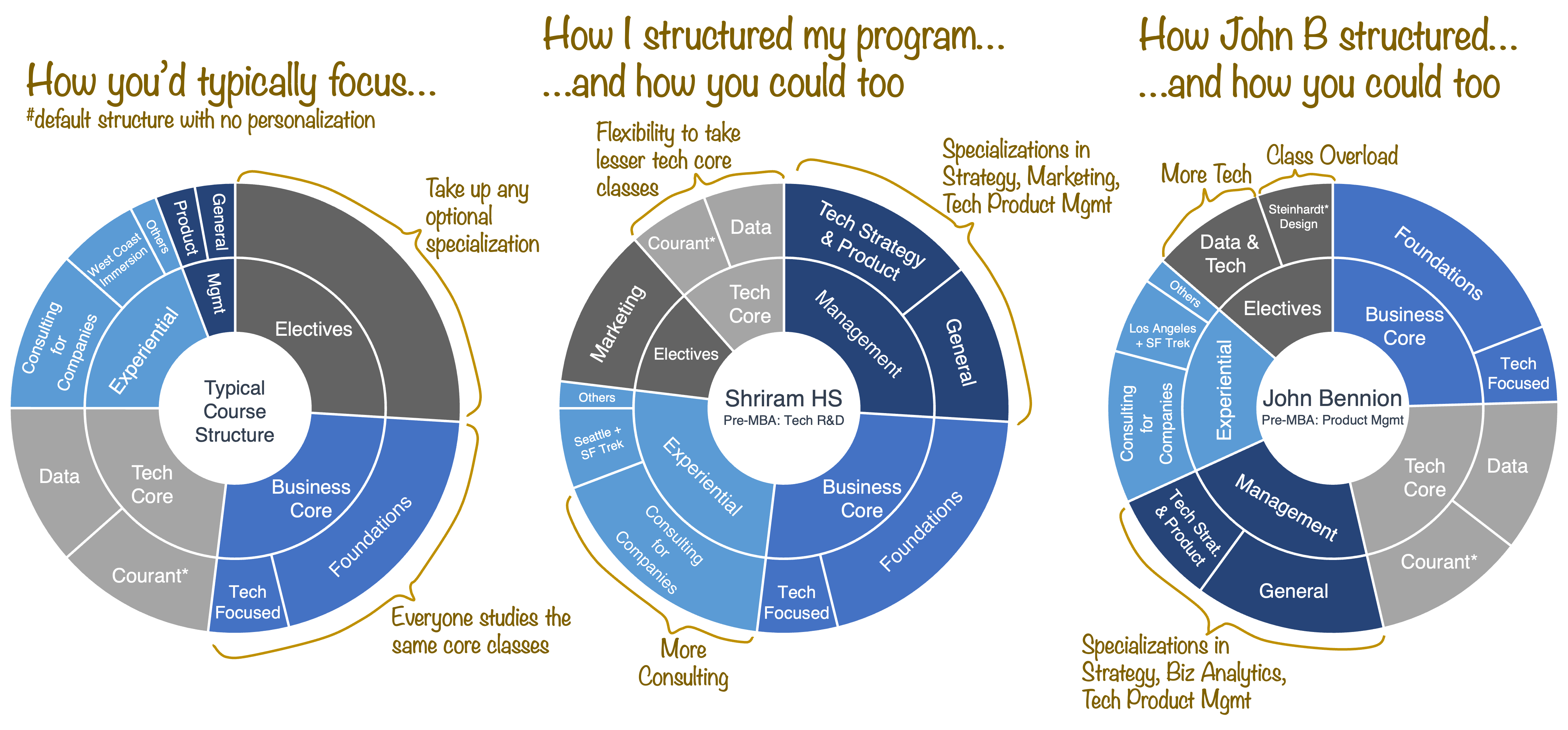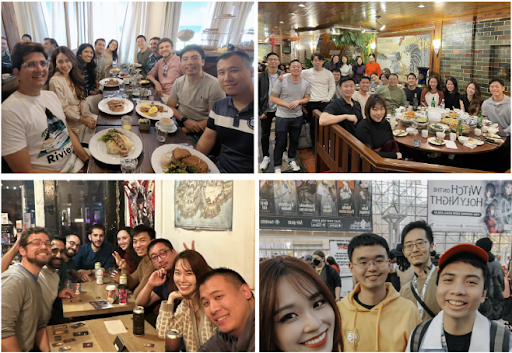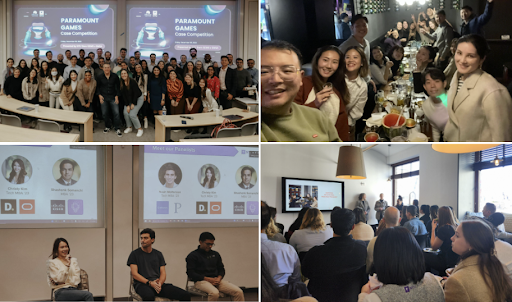 Divya Mehta is a current Tech MBA student at Stern. Within Stern, she is part of the Graduate Marketing Association and Business Analytics Club boards. Before starting her MBA, Divya has held various supply chain roles at Johnson & Johnson, Colgate-Palmolive, and Intel Corporation. She studied Industrial Engineering at Penn State University with minors in Product and Entrepreneurship. Post-MBA she is interested in pivoting from a cost-savings role to a revenue-generation role at a B2B company.
Divya Mehta is a current Tech MBA student at Stern. Within Stern, she is part of the Graduate Marketing Association and Business Analytics Club boards. Before starting her MBA, Divya has held various supply chain roles at Johnson & Johnson, Colgate-Palmolive, and Intel Corporation. She studied Industrial Engineering at Penn State University with minors in Product and Entrepreneurship. Post-MBA she is interested in pivoting from a cost-savings role to a revenue-generation role at a B2B company.
Welcome to the Journey!
One of the standout features of NYU’s Tech MBA is its embedded West Coast Immersion Course during our winter break. The West Coast immersion is an integral part of our curriculum, as it gives us exposure to a wide range of companies and opportunities beyond the NYC ecosystem. My name is Divya, and I’m here to bring you along on my personal recap of the West Coast Immersion trip!
Layout:

As part of the West Coast Immersion Coast, we were able to lottery for our choice of either Los Angeles or Seattle; I chose Seattle so that I could tack on a week in Portland, OR prior! At the end of the trip, 16 of us traveled to Steamboat, CO to join Stern Adventure club on their annual ski trip. This led to a total of 4 weeks of travel for me!

As the official start date of the trip neared, I couldn’t help but feel the adrenaline rush as my classmates began to share their travel to Seattle from all parts of the world.
Shortly after our group touched down in Seattle, we met up at Flatstick Brewing for some beer and bites. There were so many fun memories but in the interest of keeping this short, I’m sharing my top 5 highlights, in chronological order, from each leg of the immersion trip!
Seattle Highlights:
- Microsoft
- Amazon
- Class-bonding
- T-Mobile
- Starbucks
1. At Microsoft we had the pleasure of hearing from Jeff Teper, President of Microsoft Collaborative Apps, and a thought leader in the product space. I loved hearing his insights and experiences around disruption, culture, and customer empathy at a large enterprise company. I was also particularly fascinated by the Industrial Metaverse portion covered by Lili Cheng, given my background in Supply Chain.

2. At Amazon we learned the importance of Customer Obsession, Collaboration, and what makes an MLP or “Most Lovable Product!” We were treated to a delicious breakfast and lunch with an exclusive tour of the Amazon Spheres in between.

3. The small but meaningful class-bonding moments with Professor Vasant Dhar – I loved being in a remote classroom together, having a whole charter bus to ourselves, and taking in the beautiful Mt. Rainier views!
4. T-Mobile was perhaps my biggest surprise. We had a blast learning about their 5G portfolio through interactive demonstrations. Salim Koudri, Senior Vice President of Technology, gave an incredible talk on the wireless value chain, the future of 5G, and some fascinating business solutions. We learned about concepts such as “latency” through VR, and then ended our day at the employee lounge for a cocktail reception with pool, shuffleboard, and networking with senior team members.

5. Similar to T-Mobile, another company visit that surprised me was Starbucks. As someone who comes from a background in supply chain, I had always known of Starbucks as a “supply chain” company. As an Industrial Engineer, I really “nerded out” on the fact that they have an entire center dedicated to optimizing the barista experience. It turns out product design plays a huge role in speed and ergonomics.
After a hectic schedule in Seattle, we packed up our suitcases and made our way to San Francisco to meet up with the other half of our cohort!

San Francisco Highlights:
- Weekend 1
- Palantir
- Nvidia
- Calm CEO
- Google
1. Weekend 1 in the Bay consisted of reuniting with the second half of our cohort (after 4+ weeks of winter break), exploring the city, meeting some admitted students for brunch, and of course, a cohort trip to Napa Valley! This was our first chance to breathe after a hectic first week in Seattle.
2. At Palantir, we got the true Silicon Valley start-up experience as we challenged each other to ping pong and foosball games while our speakers set up.

3. One common theme that has been stressed throughout our program is the importance of coffee chats. Because of the networking and coffee chats I’d arranged, two of my classmates and I were fortunate enough to be invited to a personal tour of Google’s new campus where we rode bikes, grabbed a delicious Mediterranean meal, made our own ice cream sundaes, and chatted about the variety of opportunities at Google and beyond.

4. Nvidia was incredible. Unfortunately we weren’t allowed to take pictures inside but their building looked like it was straight out of a futuristic movie. Their demonstration of generative AI showed the power of simulations in driver safety, and digital twins in manufacturing plants.
5. An amazing way to end our week was to have an intimate conversation with the CEO of Calm, David Ko. One of my favorite quotes from the NYU Alum was “It’s not how you lead going up, it’s how you lead when things are going down.” This was especially important to hear while the Tech industry was facing economic headwinds because it taught us the importance of resilience.

In conclusion, the West Coast Immersion trip was an incredible opportunity for the NYU Tech MBA cohort to broaden our horizons beyond the NYC ecosystem and gain insights from a diverse range of companies and industry leaders. From Microsoft to Amazon, T-Mobile, and Starbucks in Seattle, to Palantir, Nvidia, Calm, and Google in the bay area (and this isn’t even all of the companies we visited!), we had the chance to learn about disruptive technologies, customer obsession, product design, 5G, and AI. The trip also provided us with invaluable opportunities for class-bonding and networking with senior faculty. Overall, the West Coast Immersion was an unforgettable experience that allowed us to deepen our understanding of the tech industry and prepare us for the challenges and opportunities ahead.


































